Ian Landsman
November 15, 2022 / Articles / 3505 Words
Customer service teams using generic email accounts (e.g. Gmail) to manage inquiries frequently run into three problems:
These common challenges mean an increase in customer issues: bottlenecks, slow resolution times, and missed requests.
The best help desk software solves all these problems (and more) by organizing high volumes of requests into a unified inbox. From there, your customer support agents can manage every ticket, collaborate with other team members on requests, and track workload and team performance — nothing is missed.
In addition to a central inbox, we believe the best help desks should have these features:
Our customer service help desk, HelpSpot, offers all of the above.
It’s worth bearing in mind that the scope of help desk software varies hugely. HelpSpot is an email management system for teams that operate primarily out of shared email accounts. But there are other types on offer, including omnichannel help desks and ITSM (IT service management) software.
In this post, we’ll review HelpSpot’s customer service help desk along with seven other popular help desks for customer service teams:
HelpSpot is a top-rated help desk that lets you manage a high volume of support tickets and collaborate with your team. You can sign up for a free 21-day trial of our software (cloud-based or on-premise) to get started.
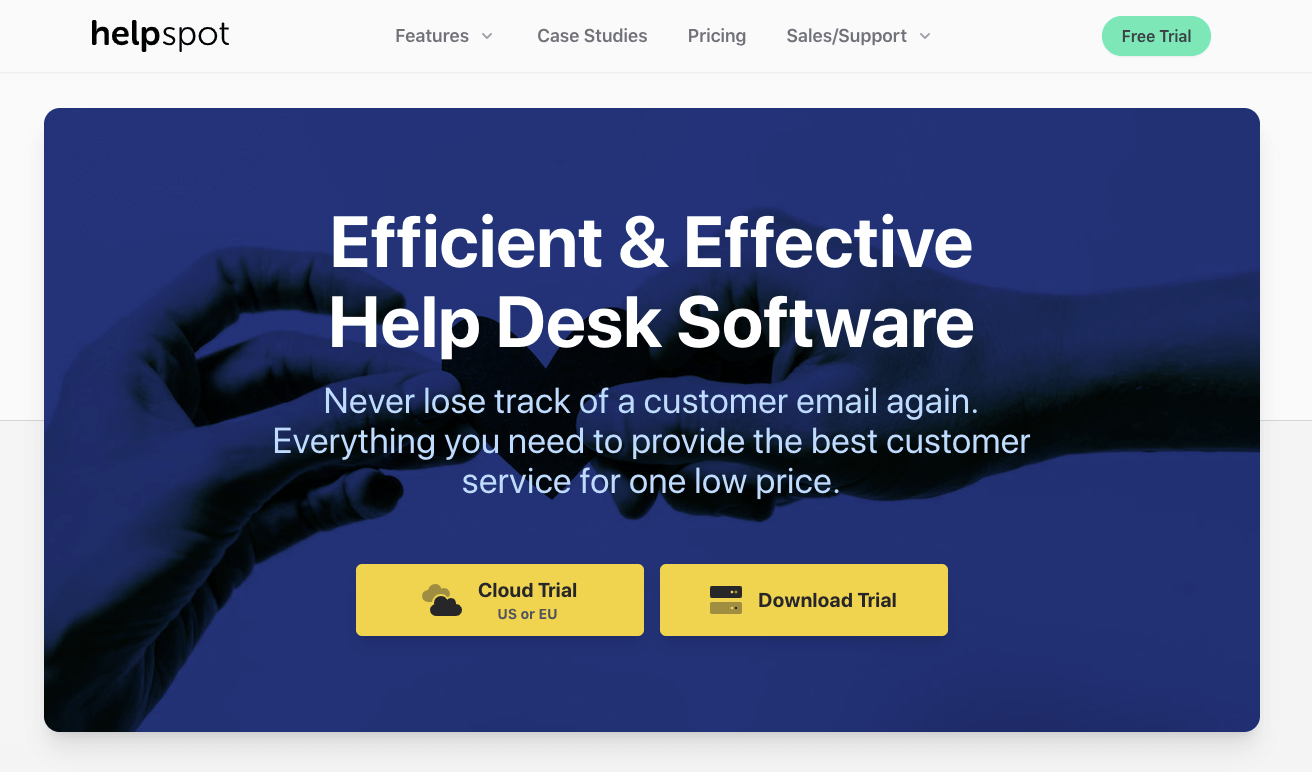 HelpSpot is designed for customer service teams that want the collaboration and reporting features of a powerful help desk in an easy-to-use dashboard.
HelpSpot is designed for customer service teams that want the collaboration and reporting features of a powerful help desk in an easy-to-use dashboard.
Training customer service teams to use help desk software can be a headache, but HelpSpot’s intuitive interface is super easy to learn. There’s no lengthy onboarding process needed, and most agents need little or no training to get started.
HelpSpot is a straightforward help desk system and this stretches to our pricing model, too. Unlike many other help desks with complicated feature packages and tiered plans, with HelpSpot you pay per seat. All our features are included from the outset and every agent can access support from our team, if they have questions.
Let’s dive into HelpSpot’s features next.
Managing multiple customer requests quickly is the basic remit of a help desk support team. And, trying to tackle this task in a traditional email account (e.g. Gmail or Outlook) is a recipe for disaster as the volume of requests grows.
HelpSpot converts every customer email into a ticket and consolidates them into one inbox. The central inbox is intuitive — simply use the top and left-side menu bars to move tickets to your queue (more on this below) and access other help desk features.
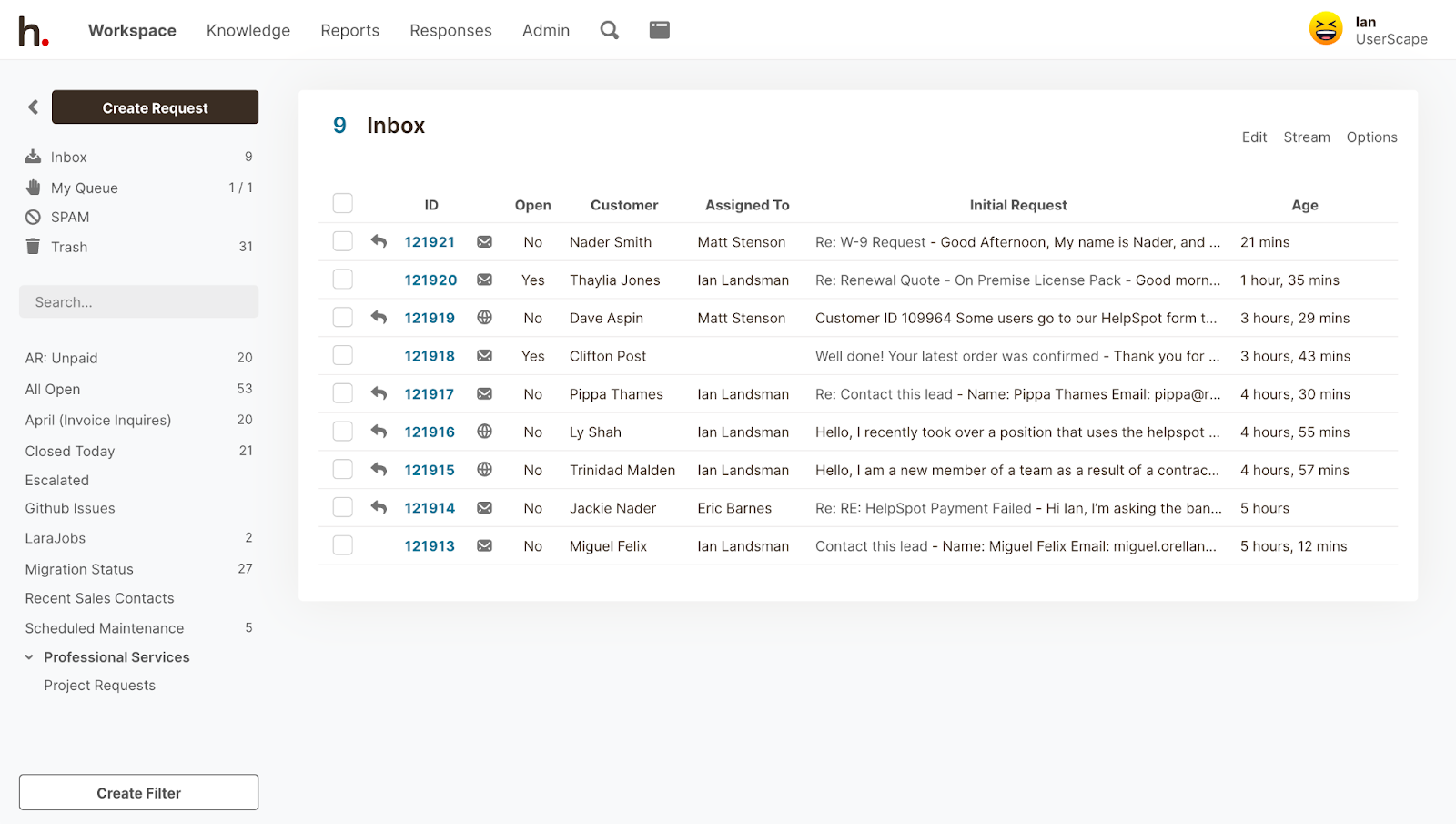 You can link unlimited email accounts and manage them from one dashboard. And, within each inbox, you can categorize help desk tickets and use filters and tags to segment further. This saves time organizing requests manually.
You can link unlimited email accounts and manage them from one dashboard. And, within each inbox, you can categorize help desk tickets and use filters and tags to segment further. This saves time organizing requests manually.
HelpSpot also offers multi-brand features, so you can divide agent workflows by brand. Instead of managing requests via one dashboard, you can create a dashboard for each brand or department that you manage.
HelpSpot lets you set up automation rules so that incoming requests are automatically prioritized and/or filtered to the correct dashboard and agents. User permissions can be used to route tickets to certain dashboards, so requests automatically reach the most appropriate team members. This ensures everyone is working on the right tickets and none are missed.
You can also set up email templates, knowledge bases, and self-service portals by brand (more on these later).
Read more: Multi-Brand Help Desk: Manage All of Your Brands with HelpSpot
From the central inbox, managers and agents can assign tickets to themselves and other team members. Once assigned, tickets are automatically added to the right agent’s queue, so there’s no confusion about who’s working on what.
All follow-ups are automatically routed back to the original agent so customers have a consistent point of contact.
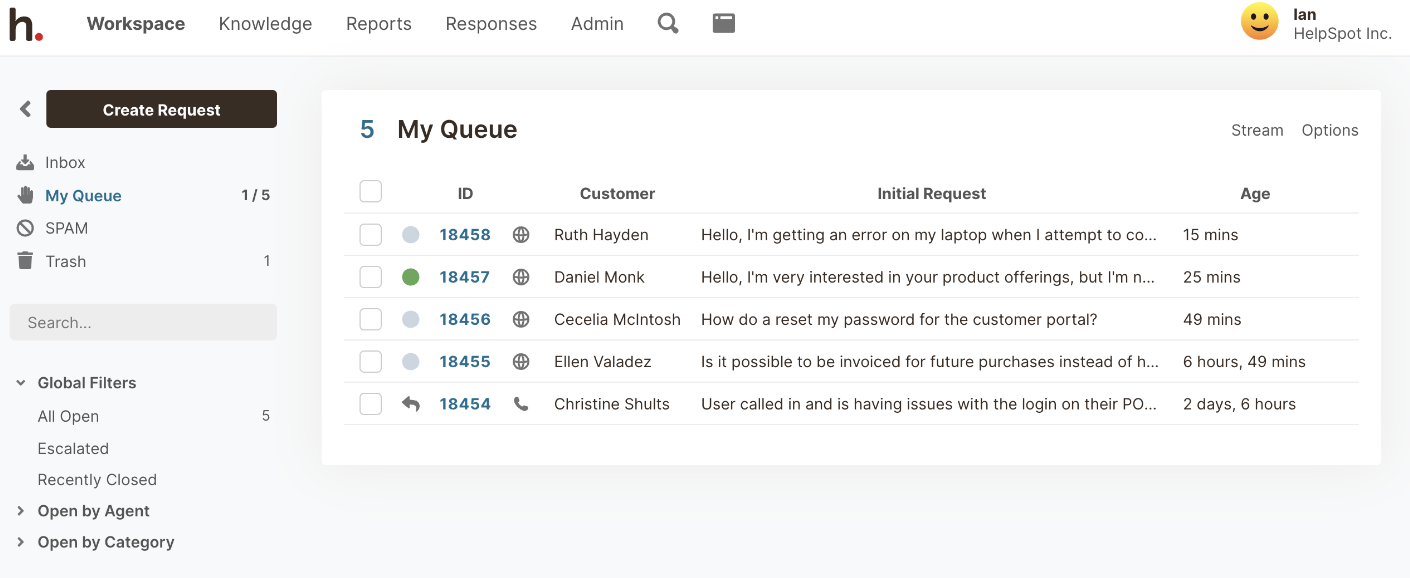
Having clear communication channels in a customer service team is the key to happy customers. HelpSpot helps agents collaborate in two ways:
1. Collision Detection alerts team members when another agent is working on the same ticket. So, if an agent starts to edit a request, any other agent on that request will receive a real-time notification. The software will also send an alert each time a field is changed. This prevents duplication and confusion for agents and customers alike.
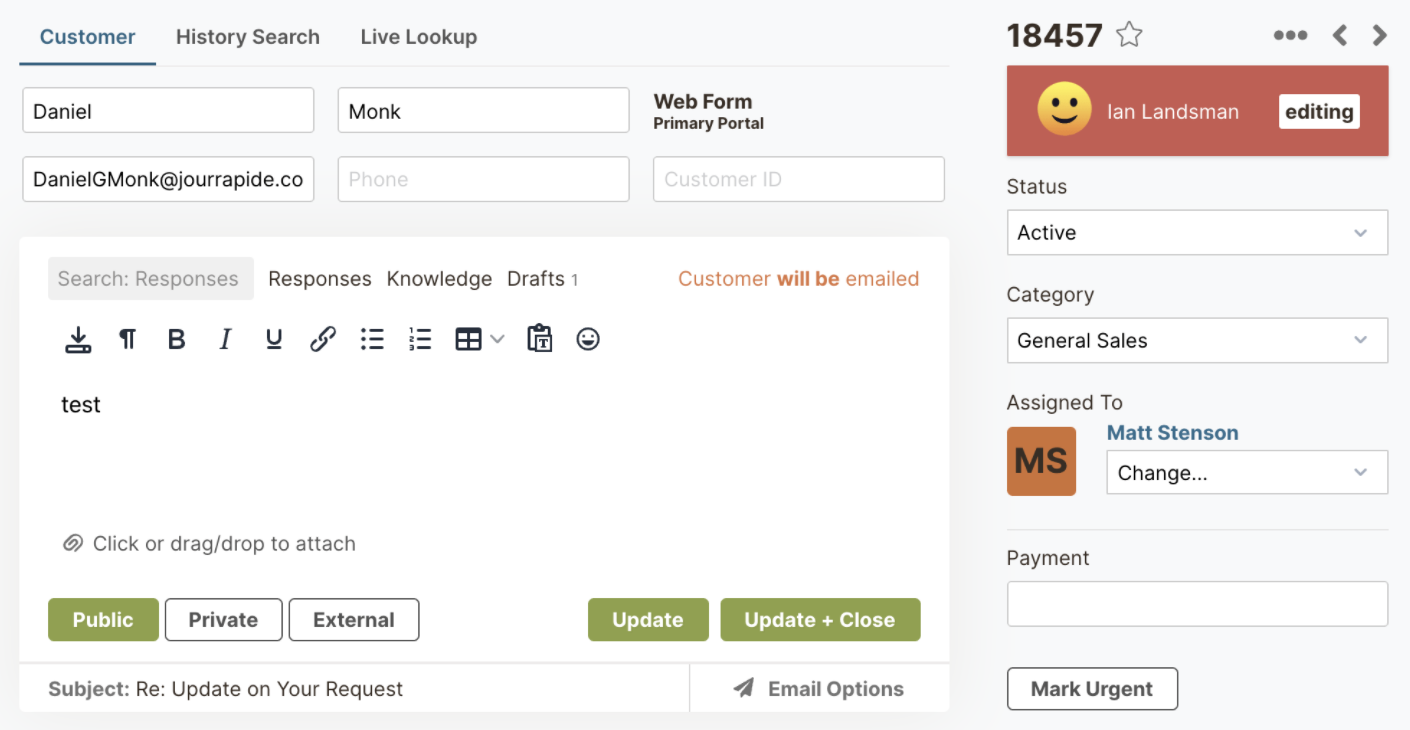 2. Internal Notes let team members communicate within tickets. Agents can tag each other within requests and leave comments directly in the ticket. There’s no need to use external messaging systems (e.g. Slack), which saves time and minimizes confusion.
2. Internal Notes let team members communicate within tickets. Agents can tag each other within requests and leave comments directly in the ticket. There’s no need to use external messaging systems (e.g. Slack), which saves time and minimizes confusion.
All notes are automatically stored so they’re available if you ever need to dig into the details of a request.
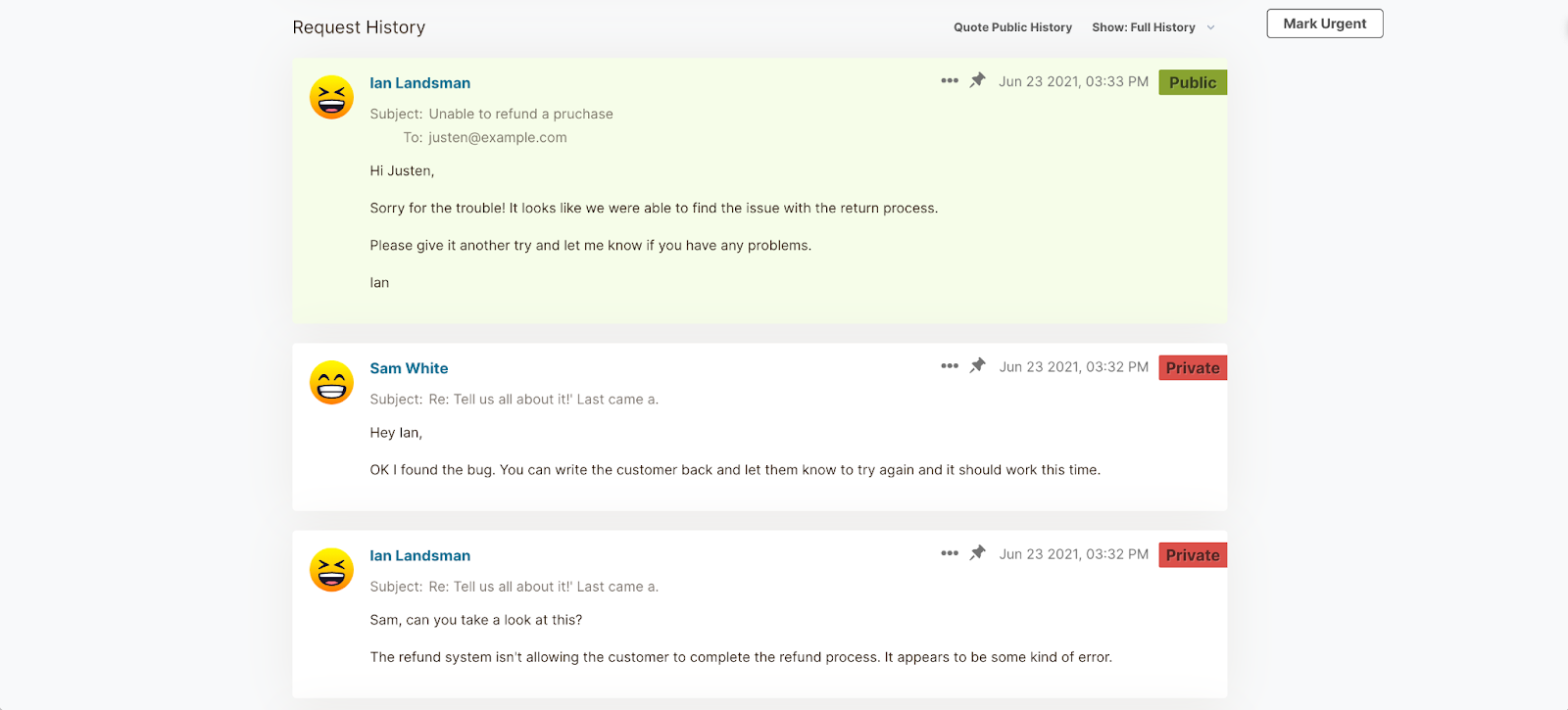
As well as collaboration features, HelpSpot has three productivity tools that help customer service teams save time:
You can create a library of email templates with answers to common questions so users can send quick responses.
For example, you can create a template that simply informs the customer that the team is working on their request, or one that includes your policy on refunds if that’s the subject of the request.
Agents can use templates as canned responses or personalize them before sending them off.
If you use multi-brand support features, you can create branded templates that include unique branding elements like logos, fonts, and colors.
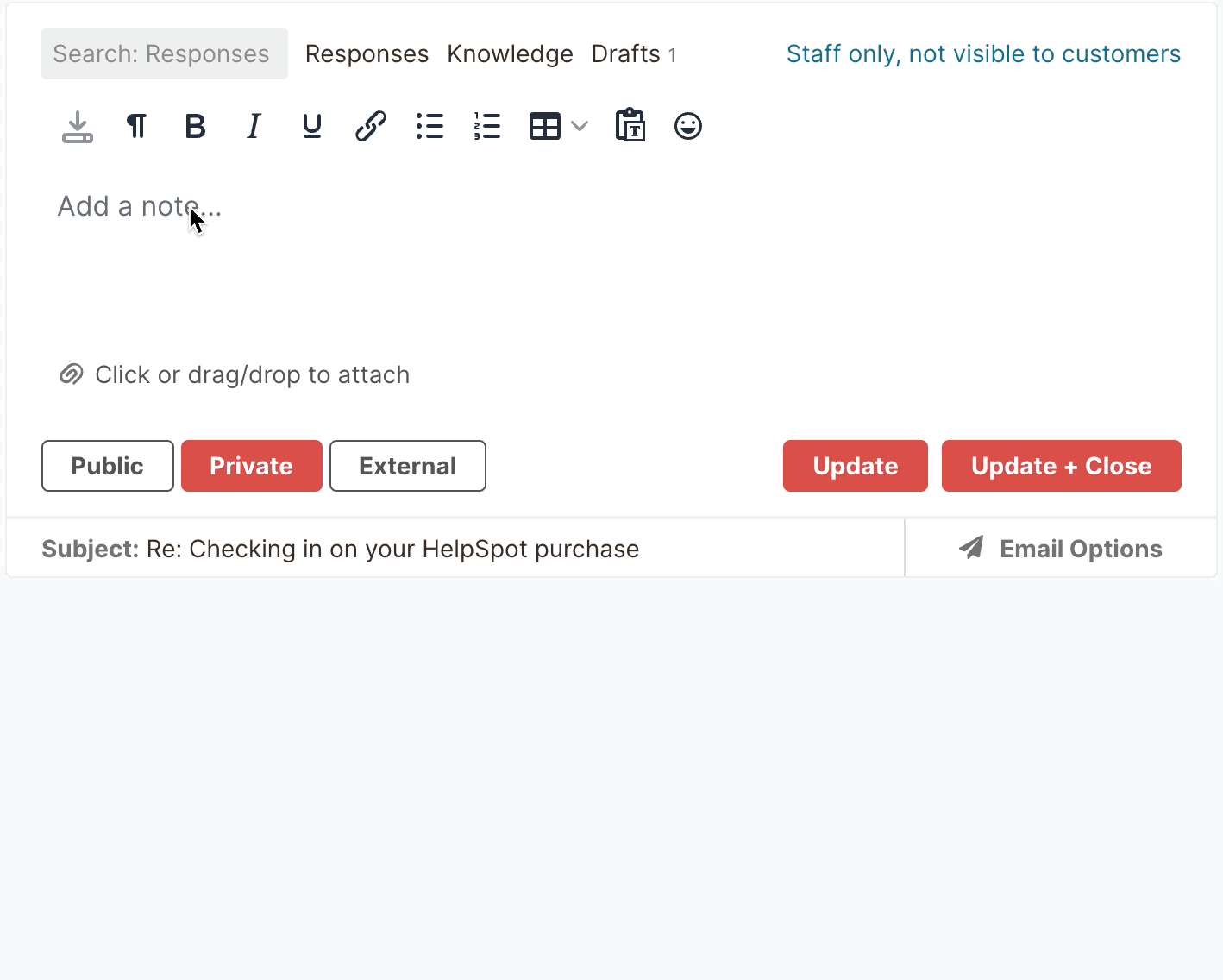
With HelpSpot, you can create knowledge bases that include important troubleshooting documents and FAQ information. Agents can refer to these in their responses to customers and attach them to email replies.
Having the correct information readily available is helpful for complex queries. It also saves agents from needing to ask for help or sending the wrong information.
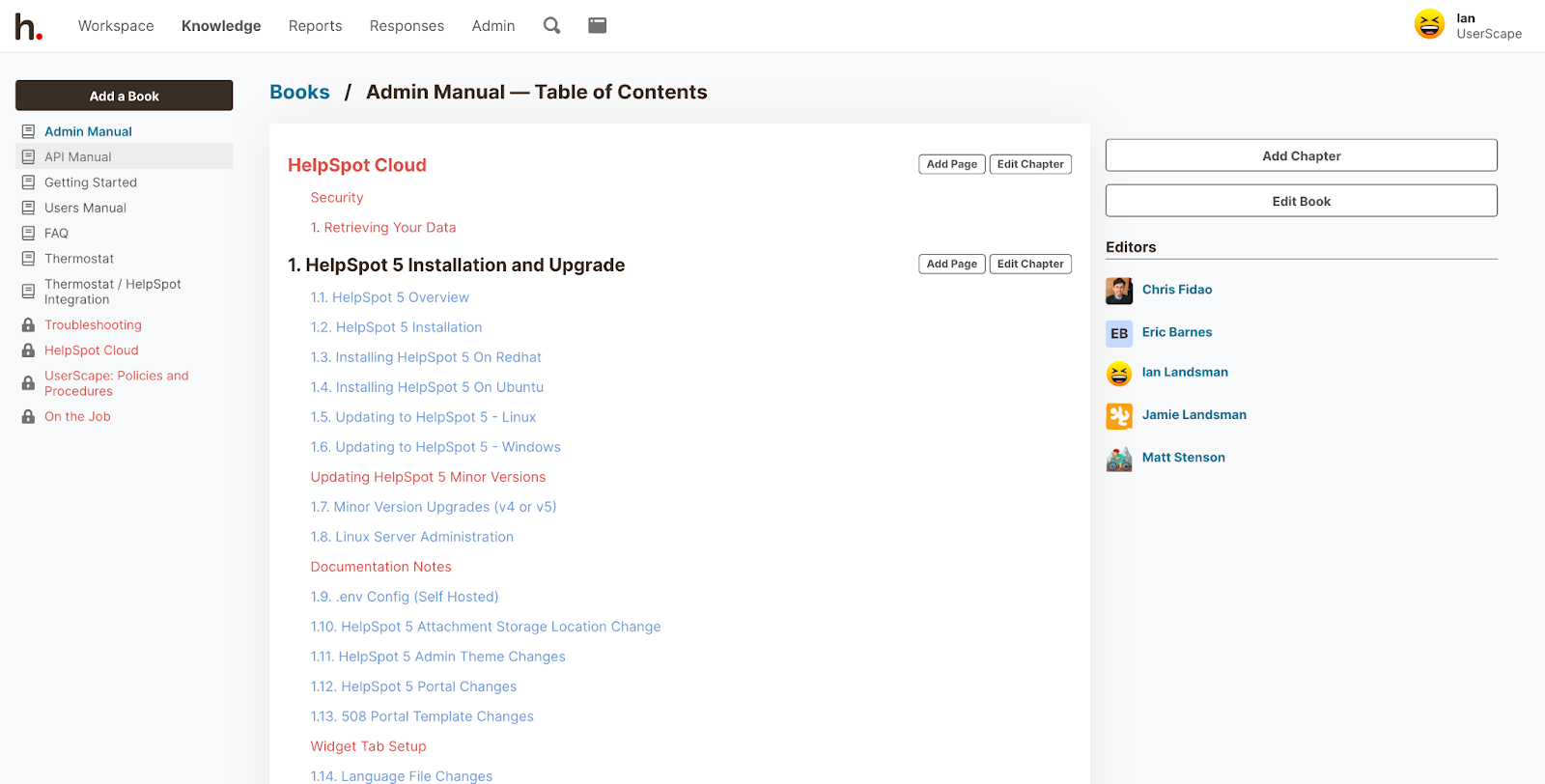 Adding resources to the knowledge base is straightforward and fast, and you can organize information by topic and brand. Plus, HelpSpot monitors knowledge base activity, so you can see which topics are popular and which resources are not as helpful.
Adding resources to the knowledge base is straightforward and fast, and you can organize information by topic and brand. Plus, HelpSpot monitors knowledge base activity, so you can see which topics are popular and which resources are not as helpful.
Read more: 5 Top Help Desk Software: Buyer’s Guide
You can also create self-service portals on your website so customers can access troubleshooting documents and answers to FAQs. You choose which resources you make public for customers and which you keep private for your team.
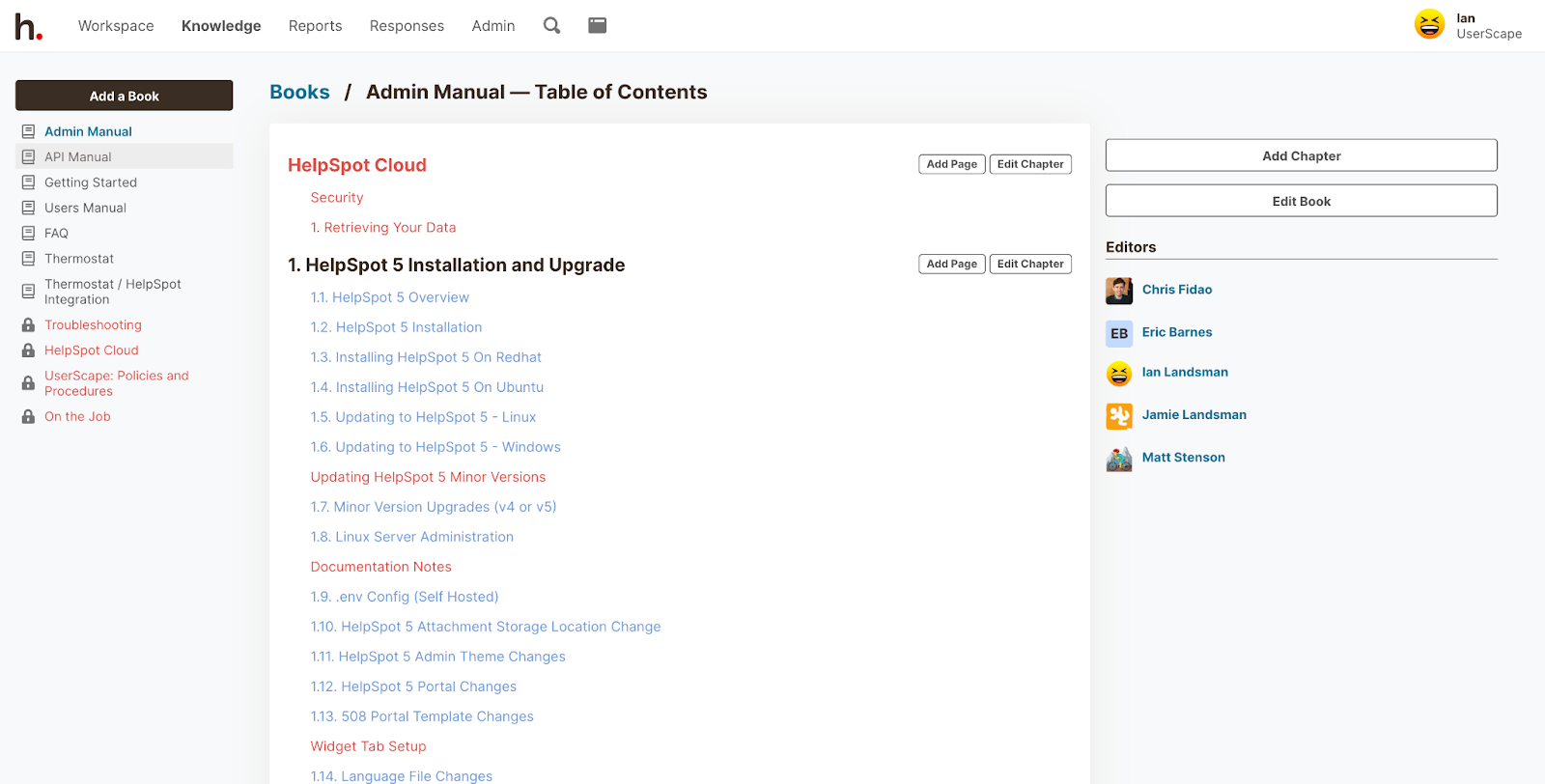 Customers can also submit tickets and check on a ticket’s status from the portal so they don’t have to search for your team’s contact info or request updates.
Customers can also submit tickets and check on a ticket’s status from the portal so they don’t have to search for your team’s contact info or request updates.
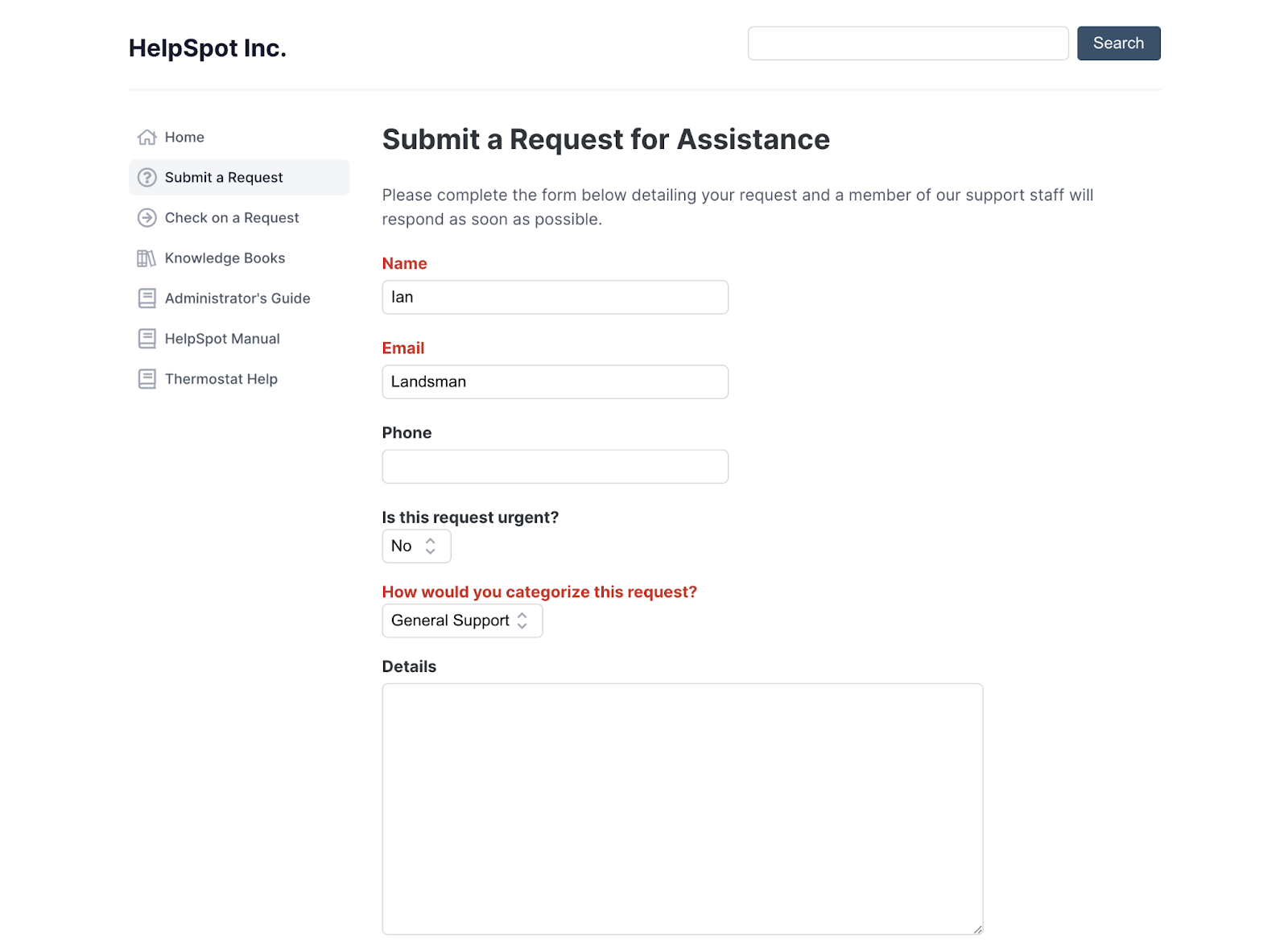 Like the internal knowledge bases, HelpSpot monitors activity on the portals. This way, you can track which resources are used most often and which search terms turn zero results. Then you know which resources to update or add to give a better customer experience.
Like the internal knowledge bases, HelpSpot monitors activity on the portals. This way, you can track which resources are used most often and which search terms turn zero results. Then you know which resources to update or add to give a better customer experience.
As we’ve mentioned, HelpSpot lets you set up automation rules to manage ticket assignments and escalations. So, you could set up time-related rules, for example:
Alternatively, you can use trigger words such as “complaint” or “refund” so tickets are automatically routed to the right team member or manager.
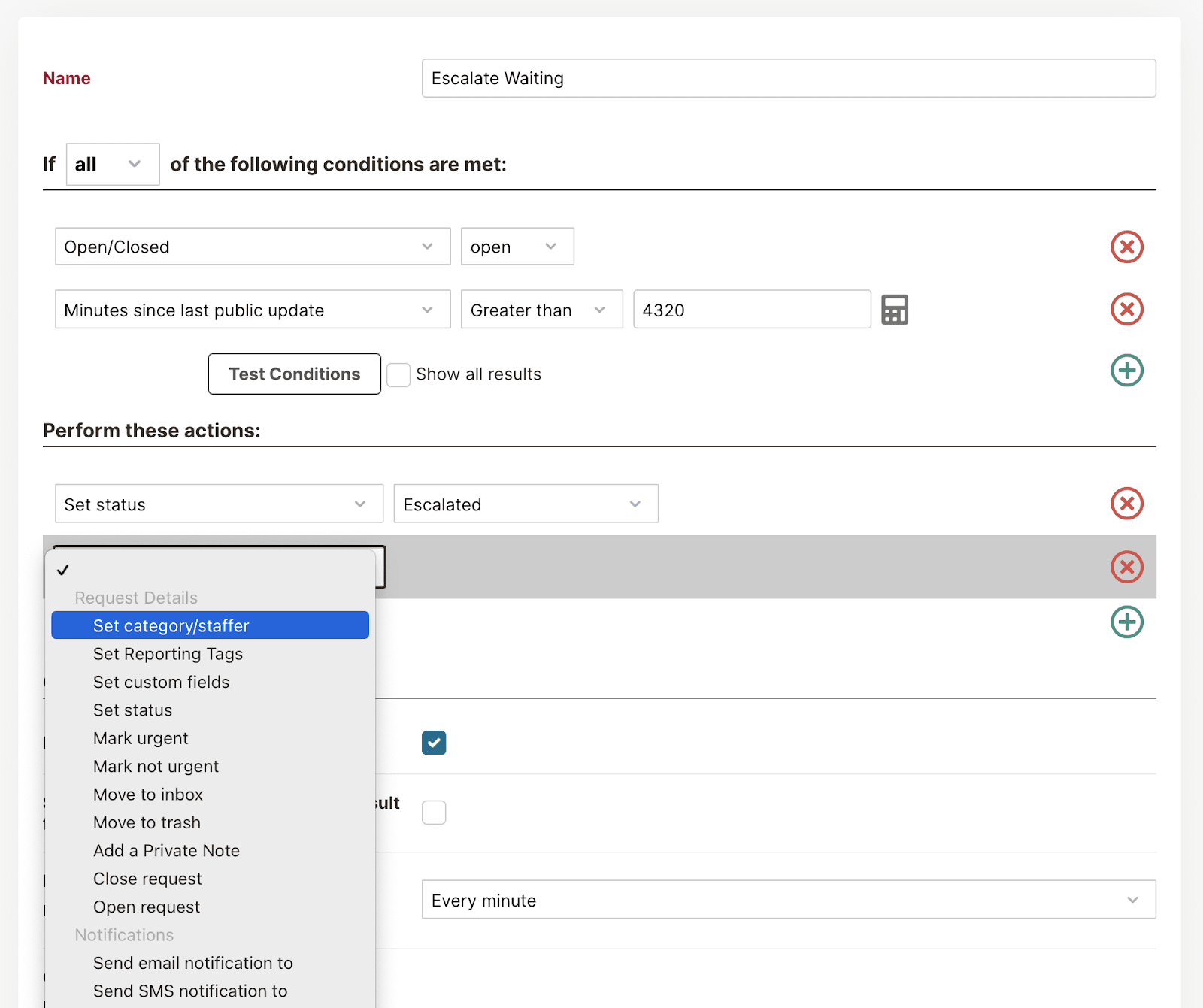 These rules help you speed up response times and manage service level agreements (SLAs).
These rules help you speed up response times and manage service level agreements (SLAs).
It’s difficult to improve customer service if you can’t pinpoint areas for improvement. For example, you may have an agent who takes a long time to respond to certain types of requests and would benefit from more training on those topics. But you wouldn’t necessarily know this if you’re not able to track performance by agent.
To solve this, HelpSpot offers a fully customizable reporting dashboard. Our built-in reporting automatically tracks essential metrics and provides at-a-glance reports. You can monitor agent performance, see what type of requests you’re receiving, and dig into any issues customers might be having.
Agent and ticket-based performance metrics include:
You can filter the raw data to analyze different data sets, view results in charts and graphs, and look at metrics over different time frames. Reports can be saved to your dashboard for future reference and exported to stakeholders automatically so everyone’s in the loop.
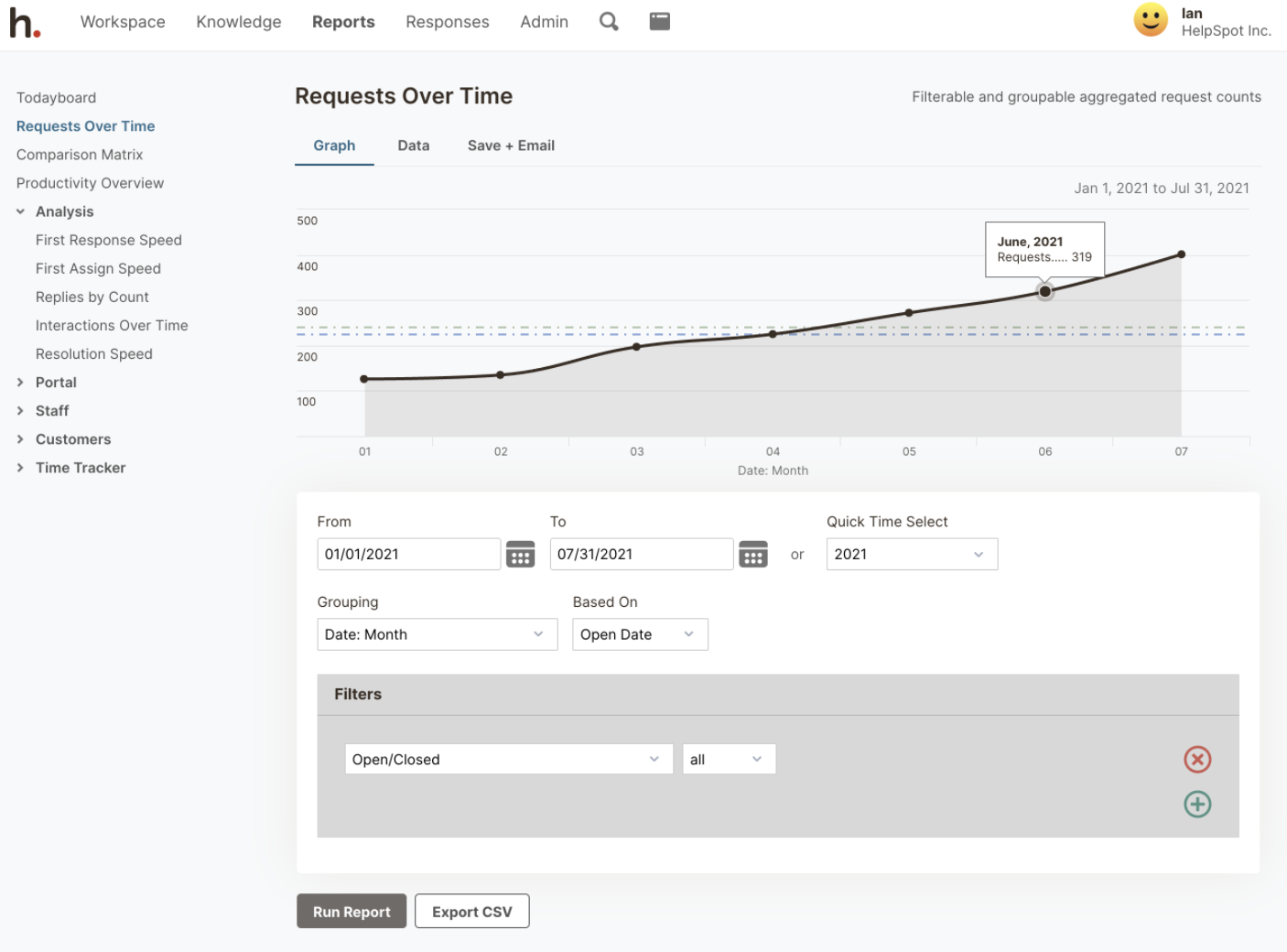 Built-in reporting helps you monitor agents’ performance, adjust workflows, and increase efficiency. All of this will improve your end-users’ service experience and boost customer relationships.
Built-in reporting helps you monitor agents’ performance, adjust workflows, and increase efficiency. All of this will improve your end-users’ service experience and boost customer relationships.
Read more: The Complete Guide to Customer Service Reporting
Connecting to your other daily tools (e.g. chatbots and social media) means you see the bigger picture and gain insight into customer problems. HelpSpot integrates with your other customer support channels in three ways:
Via its open-source API to Zapier which lets you build point-and-click integrations with the daily tools you already use. This includes bug trackers, phone systems, web forms, and thousands of other applications.
Live Lookup lets you pull data from your customer database (e.g. CRM) and view it in real-time while working on a request in HelpSpot.
Thermostat integration — HelpSpot’s sister product — lets you fully manage surveys and customer satisfaction reporting.
Integrating with your other software means you can access support requests and customer data at the same time. This helps you improve on help desk management and streamline workflows.
Many help desks offer only cloud-based solutions. But there are some businesses that need a help desk to run on their private servers. HelpSpot is one of the few providers that offers both cloud-based and self-hosted help desk software.
Both are built with the same features and are fully supported by the HelpSpot team. We also offer the flexibility of iOS and Android mobile apps for both options, so your agents can work from any device or location.
Note: If you need to run your help desk in Europe, HelpSpot now offers full cloud-based EU hosting**.
HelpSpot is a straightforward help desk for customer service teams that want email management, powerful collaboration, and reporting features.
HelpSpot can support any size of customer service team with our flexible, customizable help desk features. Sign up for HelpSpot’s free 21-day trial to see if we are the right fit for your team.
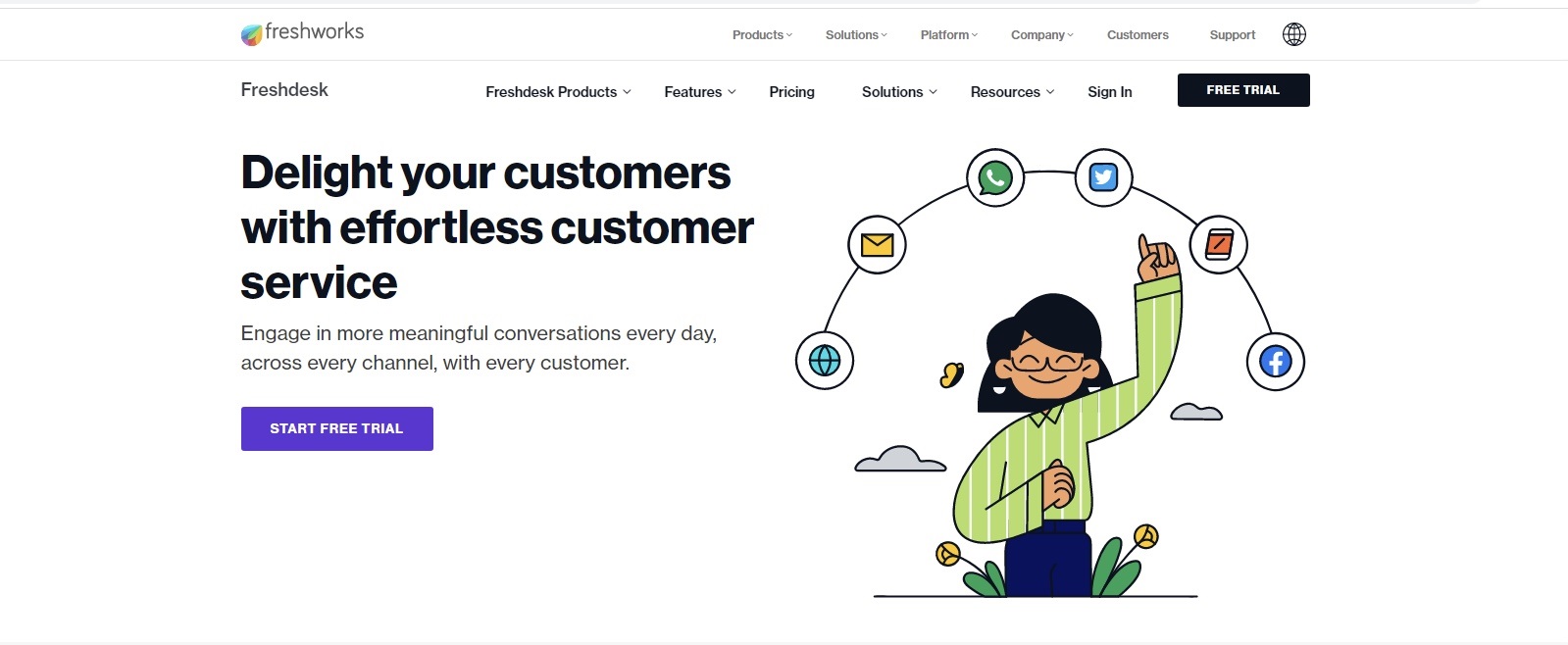 Freshdesk is a cloud-based customer service software with a user-friendly interface. Popular features for customer service teams include chatbots, automation rules, and reporting. Freshdesk also offers omnichannel routing and SLA management.
Freshdesk is a cloud-based customer service software with a user-friendly interface. Popular features for customer service teams include chatbots, automation rules, and reporting. Freshdesk also offers omnichannel routing and SLA management.
While its free plan is popular with start-ups and small businesses, Freshdesk is best suited to enterprise-sized companies because the most useful features are reserved for the more expensive plans. For example, small teams would need to update plans just to access features such as collision detection and automation. Pricing becomes complicated on the higher tiers and onboarding can be a long process as many features are advanced.
Note: If you are looking for a help desk ticketing system for your IT support team, Freshworks also offers an ITIL-ready, IT service management (ITSM) tool called Freshservice.
Read more: Freshdesk Alternatives: 9 Help Desk Software for Support Teams
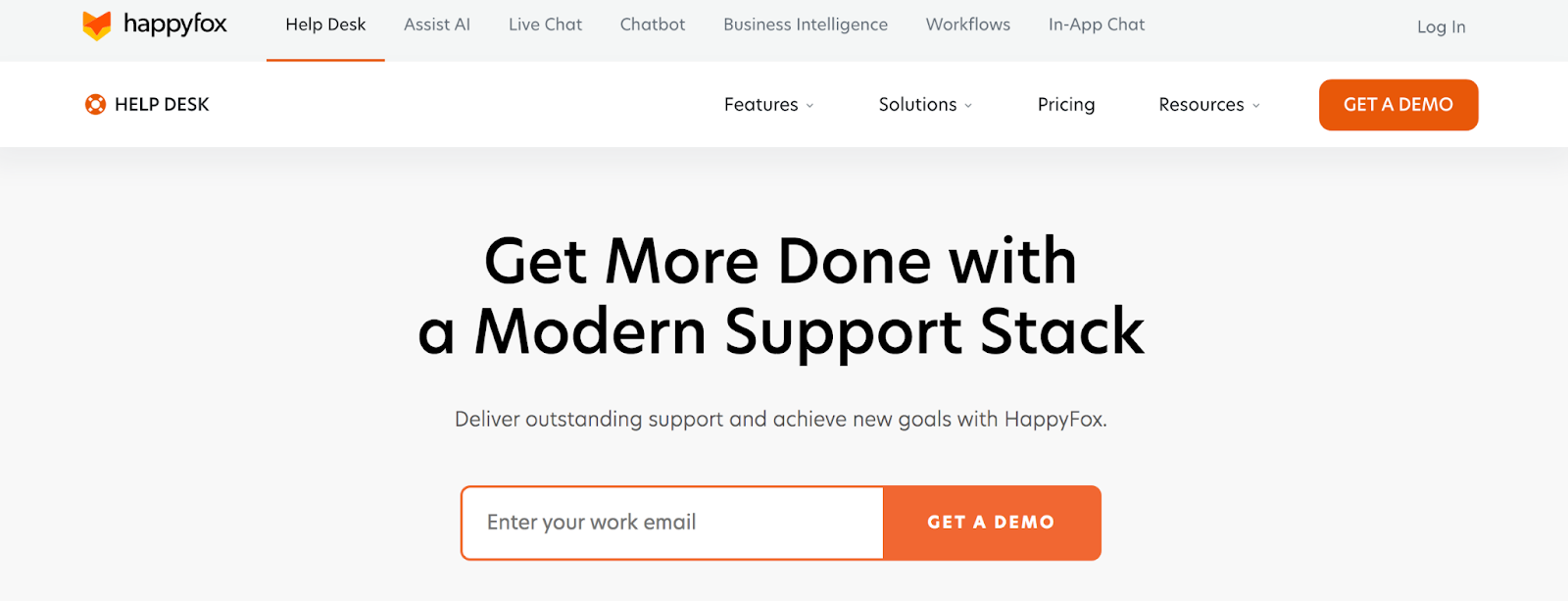 HappyFox is a cloud-based help desk solution with a robust feature set, including customer satisfaction surveys, chatbots, and social media connections. It’s a popular help desk solution for larger companies that want advanced features to manage complex requests.
HappyFox is a cloud-based help desk solution with a robust feature set, including customer satisfaction surveys, chatbots, and social media connections. It’s a popular help desk solution for larger companies that want advanced features to manage complex requests.
Although HappyFox offers a lot of functionality, set-up can be time-consuming and pricing isn’t super straightforward. Features are limited and users are capped in the starter plans. HappyFox offers custom plans and discounts for enterprise users.
HappyFox is better suited to medium and large companies that want the benefit of a feature-rich help desk and have the budget to match.
Read more: HappyFox Alternatives & Competitors: Find the Best Help Desk
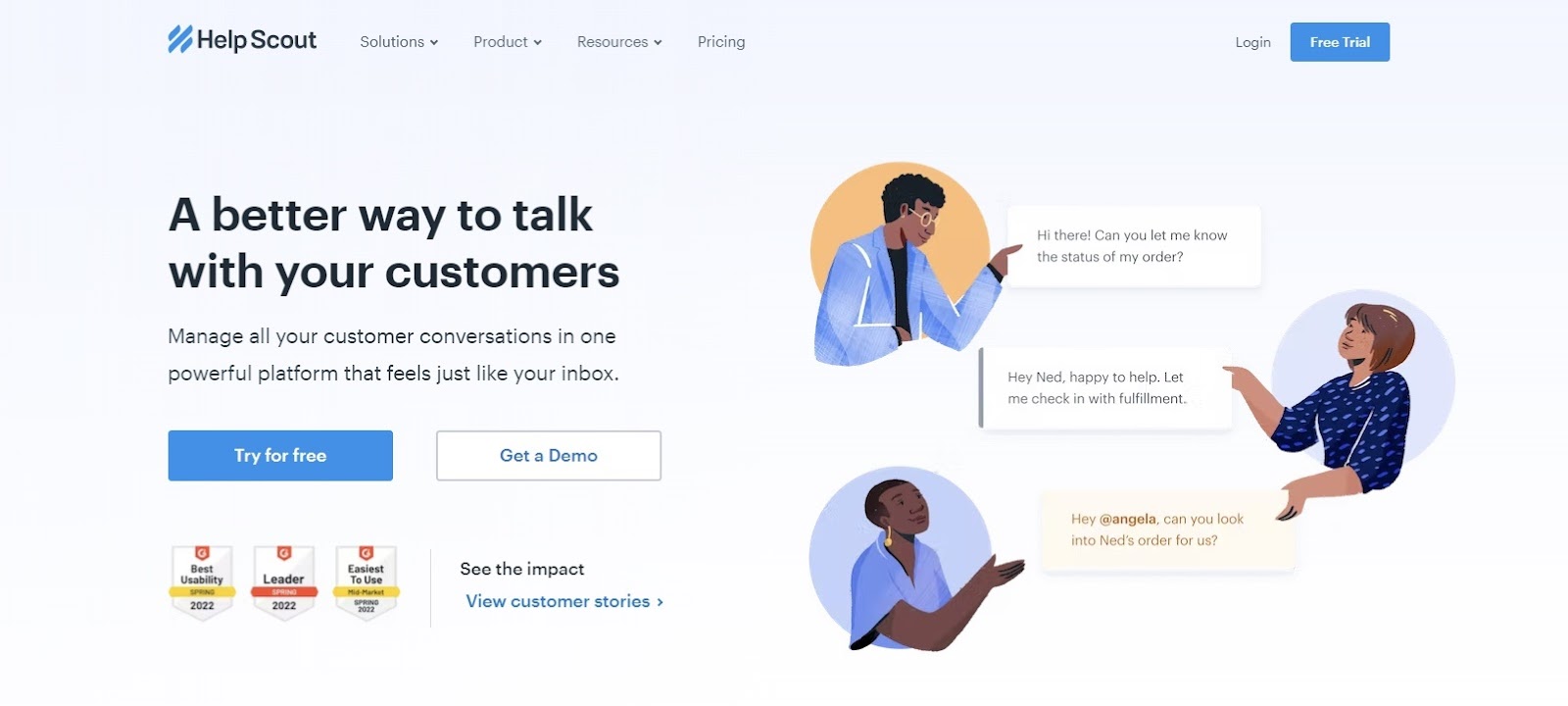 Help Scout is a simple cloud-based help desk solution that supports two native channels — email and live chat. It also offers add-ons such as knowledge management and ticket escalation for teams that want to supplement the core help desk features.
Help Scout is a simple cloud-based help desk solution that supports two native channels — email and live chat. It also offers add-ons such as knowledge management and ticket escalation for teams that want to supplement the core help desk features.
Reviews of the software mention that Help Scout is easy to learn so you won’t have to set aside too much time for training.
It’s worth noting: Help Scout caps users on the lower pricing plans, so it can be a little more expensive for businesses where the number of seats goes just over the threshold.
All in all, Help Scout is best suited for small to medium-sized businesses that want a simple help desk that combines email management with live chat features.
Read more: Help Scout Alternatives: 6 Best Help Desks for Support Teams
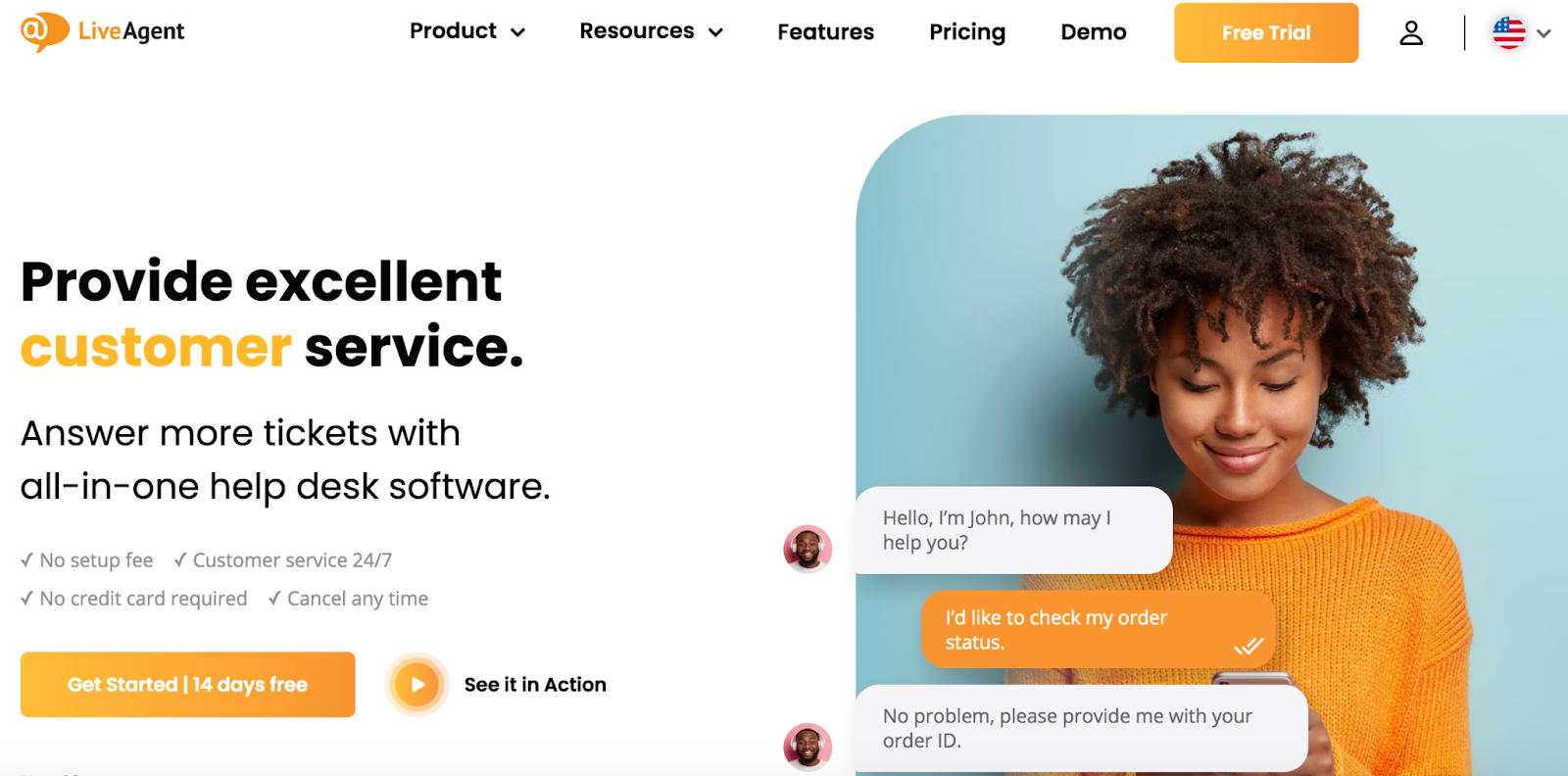 LiveAgent is a help desk for teams that offer multi-channel support. It’s especially popular for customer service teams that want to employ live chat software in their support operations. LiveAgent also offers a native CRM and hybrid ticket stream so agents can track tickets across multiple channels.
LiveAgent is a help desk for teams that offer multi-channel support. It’s especially popular for customer service teams that want to employ live chat software in their support operations. LiveAgent also offers a native CRM and hybrid ticket stream so agents can track tickets across multiple channels.
Overall, LiveAgent has a robust feature set, with over 170 different features. For large teams, the number of features is a benefit, as is LiveAgent’s client support, but some small businesses may find the platform overwhelming.
LiveAgent’s pricing is a little on the high side, so if you don’t want or need everything LiveAgent provides, it may not be the right choice for you.
Read more: LiveAgent Alternatives: 6 Best Help Desks for Customer Support
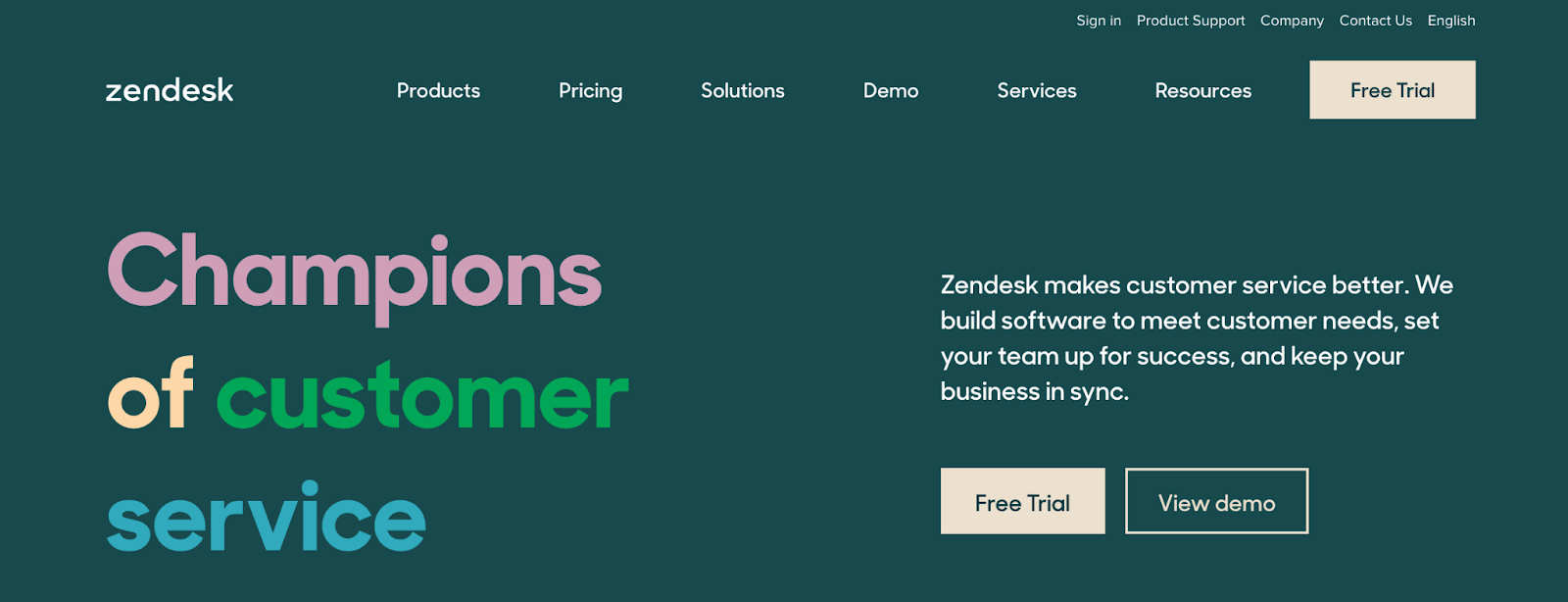
Zendesk is a multi-channel help desk software suited to large customer service teams that manage customer requests through several channels (e.g. call center, email, and social media). Zendesk’s robust feature set includes multi-channel routing, CRM integrations, social media widgets, and built-in reporting. AI knowledge management and self-service portals are available on higher price bands. However, these require complete software upgrades.
Considering the vast number of features, Zendesk’s service desk is challenging to learn. Agents need regular training sessions to keep up with the frequent updates. It’s also pretty expensive, with prices starting at $49 per agent/month.
Read more: #1 Zendesk On-Premise Alternative: HelpSpot Self-Hosted
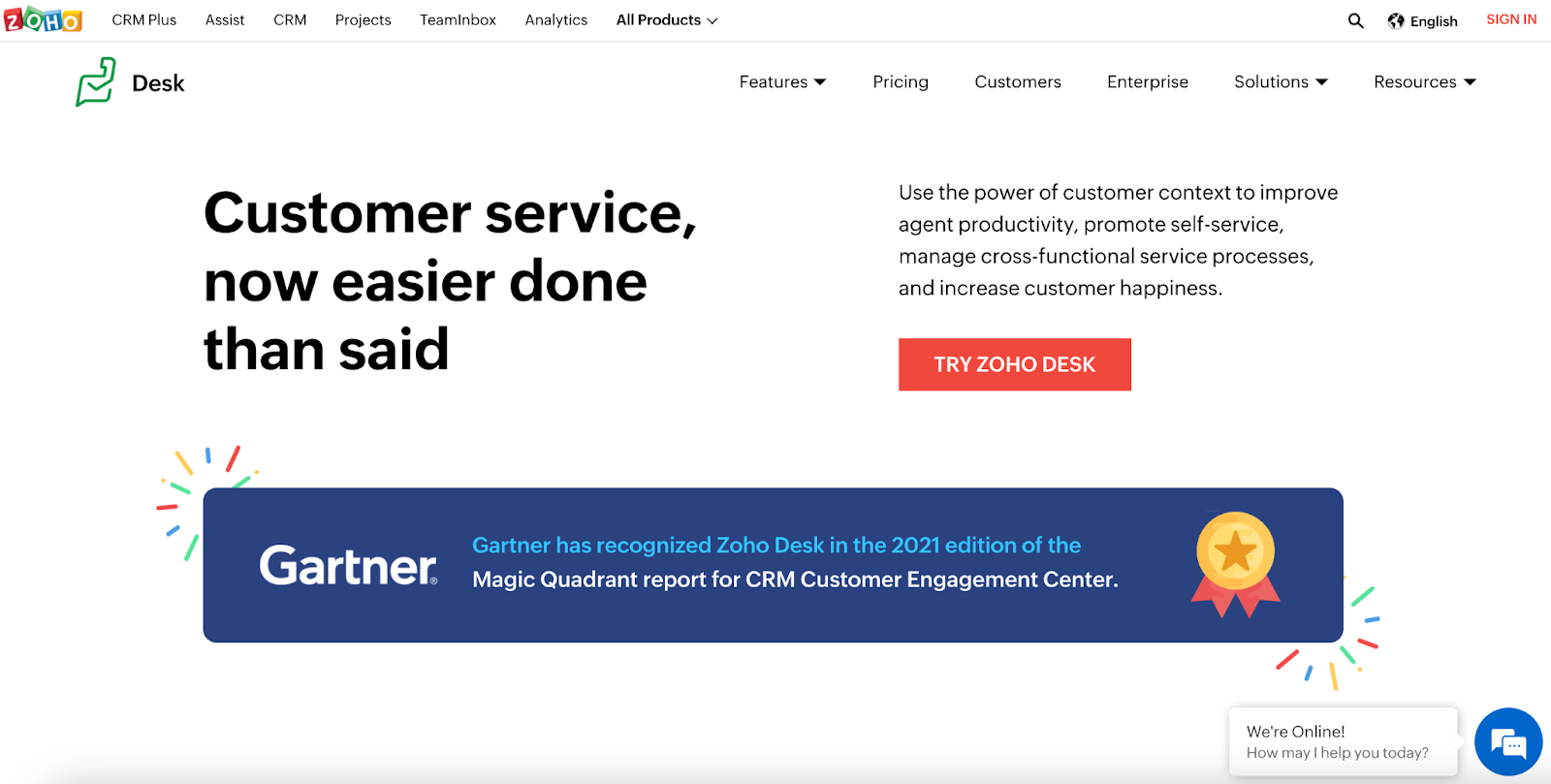 Zoho Desk is a web-based ticket management system that offers advanced features like omnichannel support. Its popular AI chatbot, “Ask Zia”, can be accessed from anywhere on the site. When customers chat in, the bot pulls info from its knowledge base and alerts agents if solutions are “unhelpful”.
Zoho Desk is a web-based ticket management system that offers advanced features like omnichannel support. Its popular AI chatbot, “Ask Zia”, can be accessed from anywhere on the site. When customers chat in, the bot pulls info from its knowledge base and alerts agents if solutions are “unhelpful”.
Zoho Desk is a good option for teams using other Zoho products (e.g. Zoho CRM) as these can be connected to gain further customer insight. That said, teams transitioning from a shared inbox need plenty of time to get used to Zoho Desk’s complex dashboard as some find the user interface difficult to navigate.
Zoho Desk is best suited to medium/large companies that want a feature-rich solution that connects to other Zoho products. Prices start at $14 per agent/month for the limited standard package and go up to $40 per agent/month for the package that includes “Ask Zia.”
Read more: Zoho Desk Alternatives | Top 8 Hep Desks for Customer Service
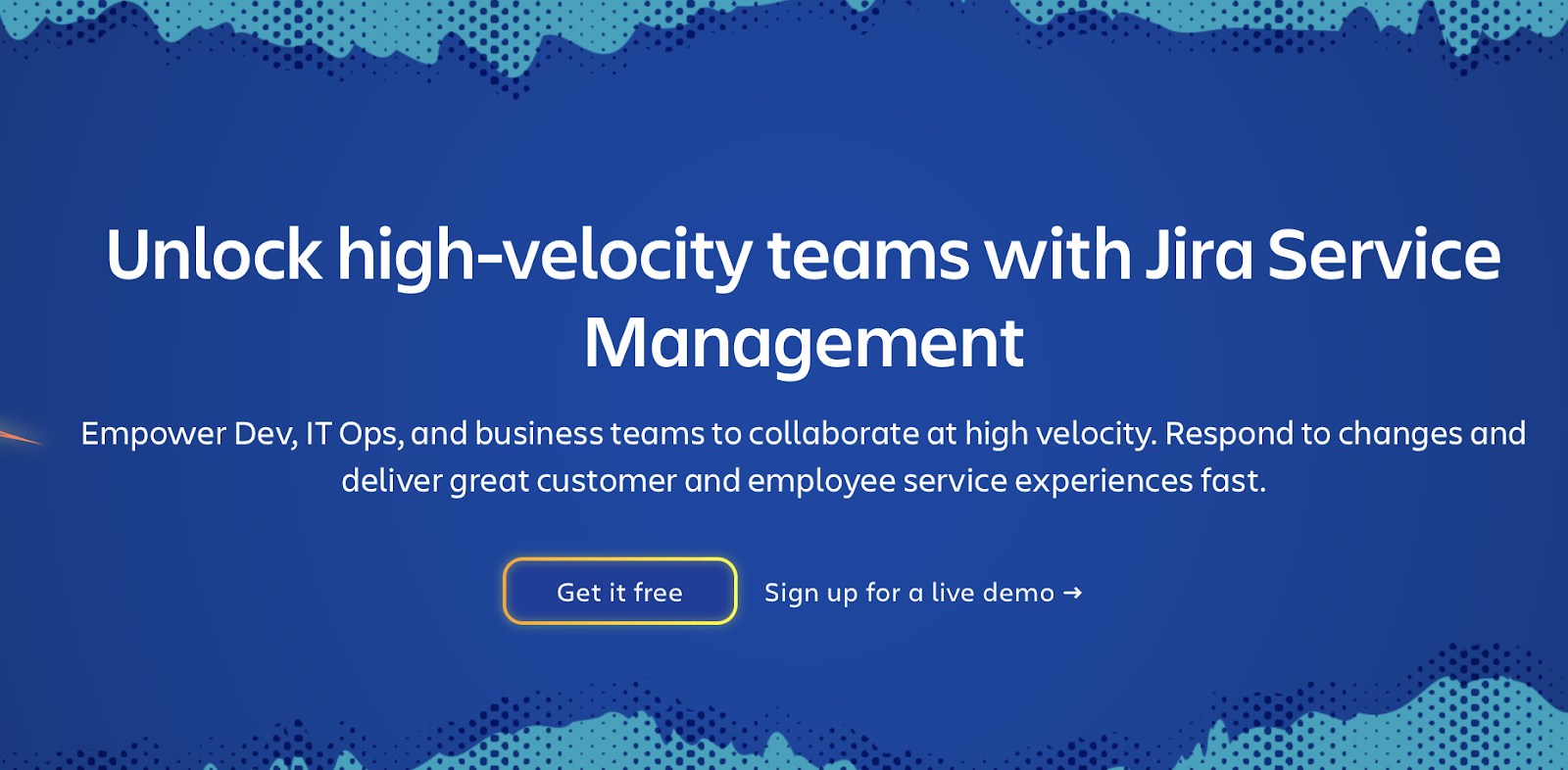 Jira is a cloud-based ITSM (IT service management) software solution for teams that need an IT help desk. Advanced features include incident management, change management, an IT ticketing system, and self-service portals.
Jira is a cloud-based ITSM (IT service management) software solution for teams that need an IT help desk. Advanced features include incident management, change management, an IT ticketing system, and self-service portals.
Jira’s thousands of integrations are useful for technical support teams that need to connect help desk software with other tools to consolidate tickets and simplify workflows. For example, Jira’s ‘Halp’ tool automatically converts messages from Slack and Microsoft Teams into support tickets.
Businesses wanting a robust support ticket system with advanced features to support IT workflows may prefer Jira. However, it has a high price ticket and isn’t the most simple to learn.
Read more: Jira Service Desk Alternatives for On-Premise Users (5 Tools to Try)
HelpSpot is the best help desk for customer service teams that want to organize customer emails using time-saving features. Our help desk offers core ticket management tools like central inbox, collision detection, and automation. However, it also has multi-brand features, so your team can handle a high volume of service requests for as many brands as you want.
HelpSpot is affordable, intuitive, and customizable to support a wide variety of customer service teams, from startups to enterprise teams.
Sign up for HelpSpot’s free 21-day trial to test our help desk features and see how they support your customer service team*.*
